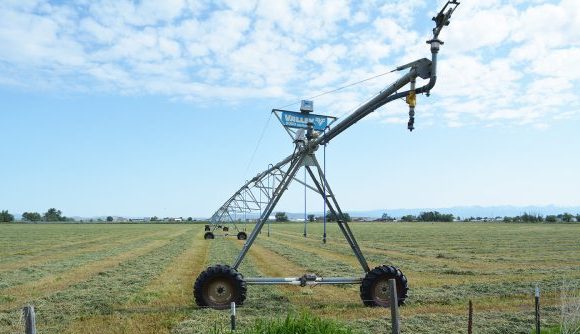Other views: Misguided old-growth policy will lead to more wildfires, smoke
Published 6:00 am Wednesday, December 7, 2022

- {photoSource}Capital Press{/photoSource}
Under the guise of “protecting” mature and old-growth forests, anti-forestry groups are pressuring the Biden administration to impose new regulations further restricting timber harvesting and other management activities on overstocked and fire-prone national forests in Oregon and throughout the West.
Such a policy would be disastrous as our forests, communities and wildlife continue to be devastated by wildfires and smoke. Limiting the ability of federal agencies to mitigate these risks will only lead to less old growth on our public lands and more carbon emissions.
The fact is the West is losing mature and old-growth forests to severe wildfires, not logging. For example, as many as 10,000 giant sequoia trees have been destroyed by wildfires. In California’s southern Sierra Nevada region, researchers have found 85% of mature forest habitat has been lost or degraded by wildfire.
Researchers have determined many national forests are unnaturally dense and need to be thinned to reduce wildfire dangers. One study found tree densities should be reduced by as much as 80% for some overstocked fire-prone forests to be healthy and resilient. To save mature and old-growth forests, experts and scientists are calling for more active forest management, not less.
Calls to further restrict logging also conveniently ignore the fact that most lands managed by the federal government are already off-limits to logging or have restrictions that make active forest management infeasible.
Forest Service projects to thin fire-prone forests and protect communities are often delayed or abandoned and can take years to implement. The same groups that are agitating to “protect” forests often sue the agency to stop projects that reduce wildfire risks and improve conditions for mature and old-growth forests.
Most recently they have sued to halt all forest management treatments, including hazardous fuels treatment work in wildland-urban interfaces and wildfire-resilience treatments on over 200,000 acres of at-risk forests in Central and Eastern Oregon.
For mature and old-growth forests, anti-forestry groups envision additional regulations similar to the Roadless Area Conservation Rule, approved during the Clinton administration. Yet more than 37 million acres of National Forests have burned since the Clinton-era roadless rule was adopted, an acreage more than seven times larger than the acres where thinning and timber harvest has actually occurred during this time.
Fires are burning so hot some forests are failing to regenerate naturally.
Efforts to restrict management in “old-growth and mature” forests also ignore the fact that forests are dynamic ecosystems where disturbance events can reset 100- to 200-year-old forests to zero in a single day.
When it comes to climate change, Oregon’s 2020 wildfires emitted over 25 million metric tons of carbon. That’s more than the state’s annual transportation and power sector emissions combined. A new analysis led by researchers with the University of California, Los Angeles found California’s 2020 wildfires reversed the state’s climate gains by putting twice as much greenhouse gas emissions into the Earth’s atmosphere as its total reduction in these pollutants in California between 2003 and 2019.
It is difficult to see how we reverse these trends by further restricting forest management that helps make our forests more resilient to wildfires and other threats. After all, healthy, growing trees remove and store carbon dioxide from the atmosphere.
Responsibly managed forests help increase net carbon dioxide absorption by reducing the risk of mortality caused by catastrophic fire, disease and insects that increase carbon-emissions. A range of effective active forest management tools, including timber harvesting, thinning and controlled burns, can also be used to help forests better adapt to changing climate conditions.
Forest management also provides natural wood products that store carbon and serve as sustainable alternatives to more energy-intensive materials. When timber is sustainably harvested, much of that carbon stays in the wood, lumber and other timber products indefinitely.
Across the product lifecycle, wood products achieve negative carbon emissions — lower than any other building material — and also require very little nonrenewable energy for their manufacture. With global demand for building materials and other natural resources projected to double by 2060, a recent United Nations report has called for a large increase in the use of wood products to meet this demand.
The Intergovernmental Panel on Climate Change, the most trusted voice on climate change, says “sustainable forest management aimed at maintaining or increasing forest carbon stocks, while producing an annual sustained yield of timber, fiber or energy from the forest, will generate the largest sustained mitigation benefit.”
By comparison, further limiting forest management and reducing our regional wood supply will only lead to more wildfires, more carbon emissions, and more losses of mature and old growth forests.
Do you have a point you’d like to make or an issue you feel strongly about? Submit a letter to the editor or a guest column.









